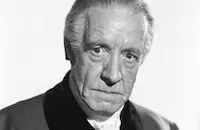The Prisoner of Zenda

Brief Synopsis
Cast & Crew
Rex Ingram
Lewis Stone
Alice Terry
Robert Edeson
Stuart Holmes
Barbara La Marr
Film Details
Technical Specs

Synopsis
While the weak and drunken King Rudolph of Ruritania awaits his coronation, he is drugged by his brother, Black Michael, who is preparing a coup d'état. Michael's plans are thwarted by the substitution at Rudolph's coronation of Rassendyll, an Englishman who is the king's exact double. Michael, discovering the ruse, kidnaps the real king and holds him captive in the castle at Zenda. Rassendyll aids in the king's rescue and renounces the love of the Princess Flavia, the king's bethrothed, to return to England.

Director
Rex Ingram
Cast

Lewis Stone

Alice Terry

Robert Edeson
Stuart Holmes

Barbara La Marr

Malcolm Mcgregor
Edward Connelly
Lois Lee
Crew

Videos
Movie Clip



Hosted Intro
Film Details
Technical Specs

Articles
The Prisoner of Zenda (1922)
Hope's book had created a whole sub-genre when it became a best seller in 1894 -- the Ruritanian Romance. Named after the novel's setting the Ruritanian Romance combines the glamour of the European aristocracy with swashbuckling adventure and tales of doomed love between royalty and commoners. In this perennial favorite, the look-alike cousin of a kidnapped king takes his place to thwart the plans of the evil Black Michael who wants to steal the throne and the king's beautiful fiancée.
Metro entrusted the production to Rex Ingram, an Irish-born actor-turned-director who had scored a huge hit the year before with The Four Horsemen of the Apocalypse (1921). Ingram was as noted for his ability to keep large-scale productions moving as for his genius at creating stars. For Horsemen, he had discovered Rudolph Valentino. Prior to that, he had turned Alice Taaffe, a perky redhead usually cast in supporting roles, into Alice Terry, the icy blonde star of his greatest pictures (and his wife). Although Terry and Lewis Stone (as the identical cousins) were slated for the film's starring roles, Ingram realized that much of the picture's success would depend on the proper casting of Rupert of Hentzau, the henchman who does all of Black Michael's dirty work. He set out to find a tall, Germanic blond in his mid-thirties, and wound up with a short Mexican actor of only 23. But once he saw the devilish humor in Ramon Samaniego's eyes, he knew he'd found his man, though the actor would soon change his screen name to Ramon Novarro. It's fair to say that Novarro pretty much stole the film with his tongue-in-cheek playing, making him one of the first in a long line of charismatic movie villains who would make evil dangerously seductive. (Other successors who come to mind are Basil Rathbone, James Mason and Alan Rickman). Although originally billed fourth, Novarro would rise to top billing for later reissues of the movie.
Novarro wasn't the only star created by the success of The Prisoner of Zenda. Almost as adept at scene stealing was Barbara La Marr, cast as Black Michael's devoted mistress. Her dark looks and large, brooding eyes provided a perfect contrast to Terry and made her more than a match for the exotic Novarro, with whom she would share a wicked seduction scene. La Marr had actually been discovered by Douglas Fairbanks, Sr., who had cast her as Milady de Winter in his 1921 version of The Three Musketeers. The Prisoner of Zenda would make her a star, nicknamed "The Girl Too Beautiful." She was too beautiful to survive, as it turned out, dying a few years later from a combination of tuberculosis and drug abuse. Her name would live on when Louis B. Mayer transformed an Austrian actress named Hedy Kiesler into Hedy Lamarr.
Ingram filled The Prisoner of Zenda with memorable moments, thrilling battles and stunning visuals, courtesy of his favorite cameraman, John F. Seitz. He also paid tribute to one of his favorite fellow directors, Erich von Stroheim, by costuming and making up one of Black Michael's unbilled henchmen to look like the director, whose moniker was "the man you love to hate."
The Prisoner of Zenda was a big hit for Metro Pictures, and the studio filmed Hope's sequel Rupert of Hentzau, the following year. With none of the original personnel involved, however, the sequel was a disappointment. But the original continues as a popular favorite, with Rupert a star-making role for Douglas Fairbanks, Jr. in the 1937 version (Ronald Colman and Madeleine Carroll played the leads) and James Mason in the 1952 remake (which starred Stewart Granger and Deborah Kerr). The latter also featured the 1922 film's leading man, Lewis Stone, in a supporting role.
Director: Rex Ingram
Cinematography: John F. Seitz
Screenplay: Mary O'Hara, based on the novel by Anthony Hope
Film Editing: Grant Whytock
Cast: Ramon Novarro (Rupert of Hentzau), Lewis Stone (Rudolf Rassendyll/King Rudolf), Alice Terry (Princess Flavia), Robert Edeson (Colonel Sapt), Stuart Holmes (Grand Duke "Black" Michael), Malcolm McGregor (Capt. Fritz von Tarlenheim), Barbara La Marr (Antoinette de Mauban).
BW-114m.
by Frank Miller

The Prisoner of Zenda (1922)
Quotes
Trivia
Anthony Hope also collaborated with Edward E. Rose for a play, "The Prisoner of Zenda", which opened in New York City, New York, USA on 4 September 1895.
A musical version of the novel, called "Princess Flavia," opened in New York City, New York, USA on 2 November 1925 and had 153 performances. The music was by Sigmund Romberg, and Douglass Dumbrille was in the cast.














